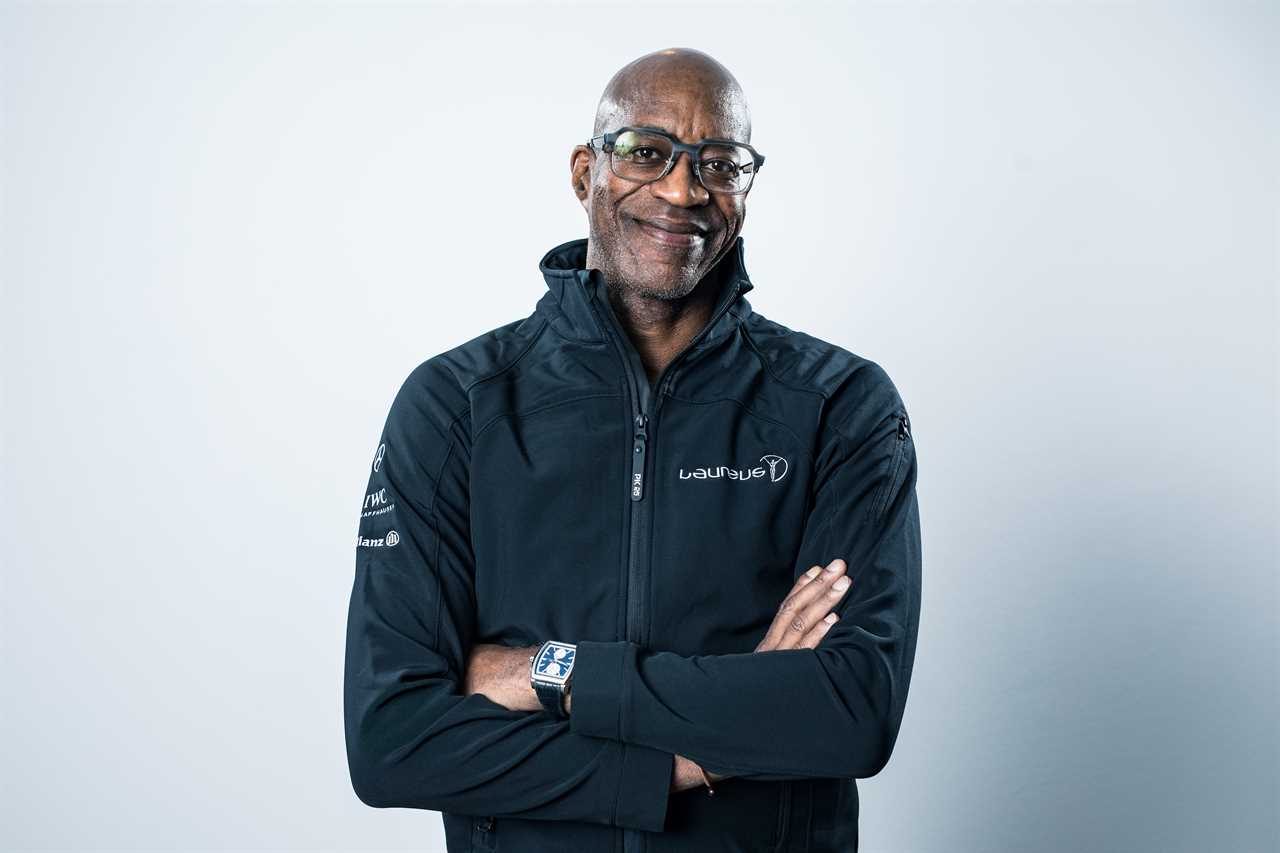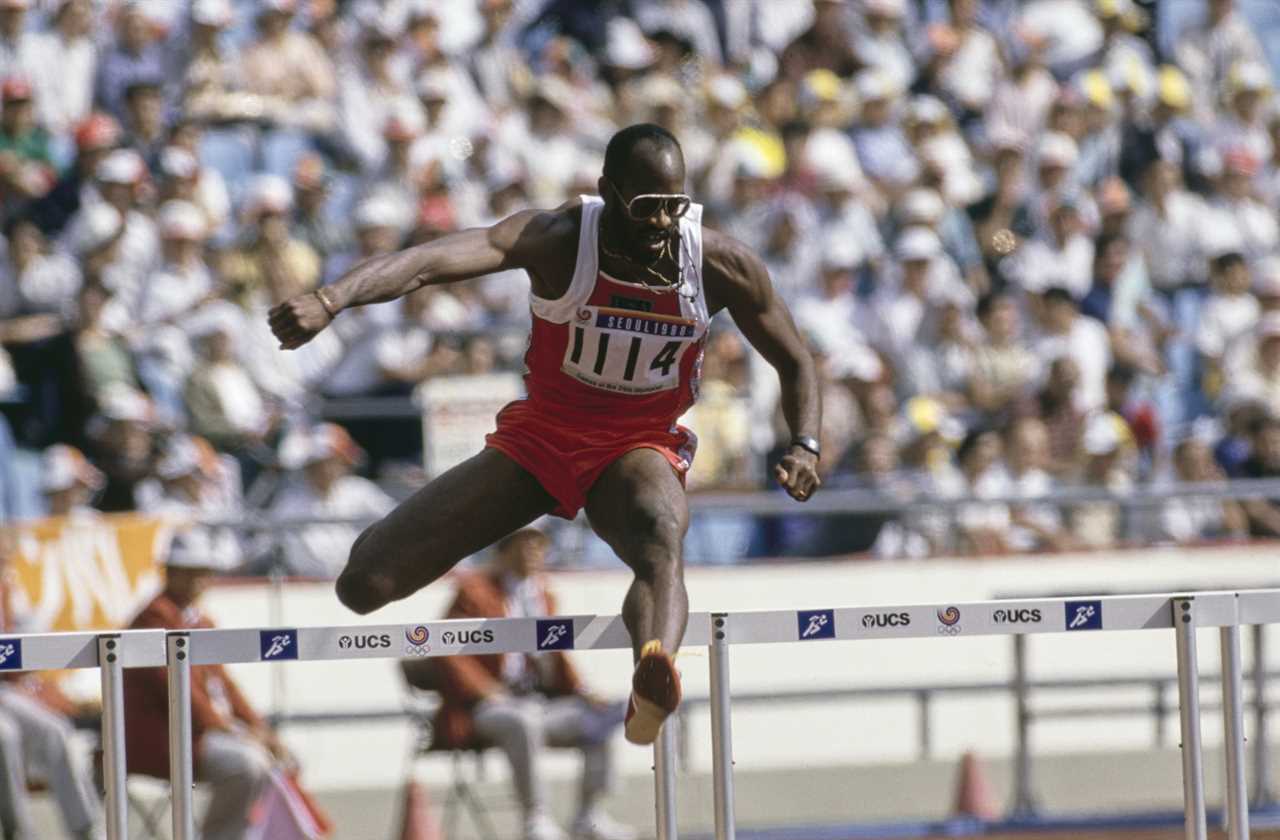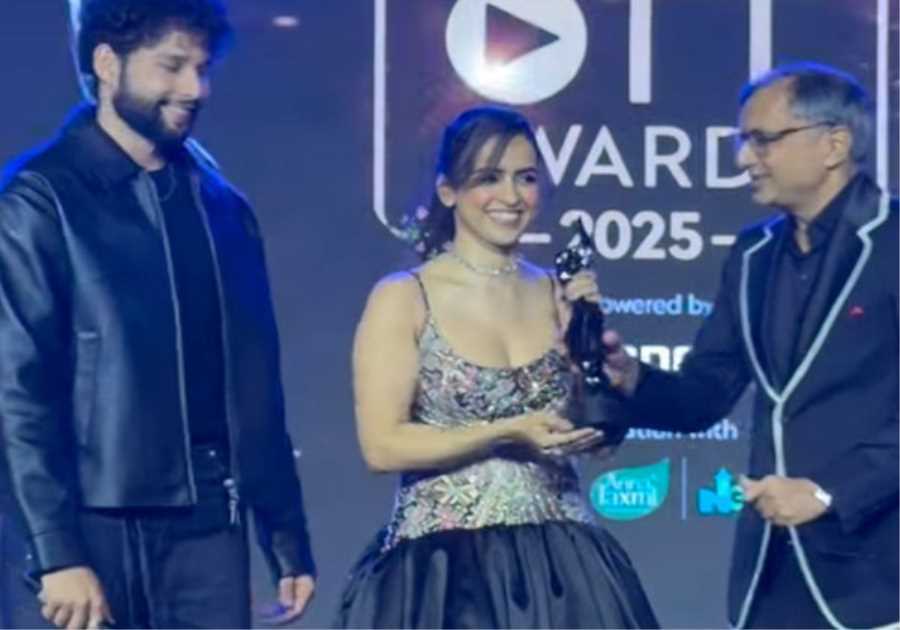Looking back on his life, Morehouse College alumnus Edwin Moses could never imagine that the self-proclaimed nerd from Dayton, Ohio, who didn’t earn an athletic scholarship to college would go on to win two Olympic gold medals and a bronze.
Moses ran his first 400-meter hurdles race several months before the 1976 Olympics in Montreal, and in one year he transformed how track and field athletes would run the 400-meter hurdles.
Morehouse will host the world premiere of MOSES-13 Steps, a documentary examining Moses’ life and legacy, at 7 p.m. Saturday in the college’s Martin Luther King Jr. International Chapel.
Moses initially started running track at Morehouse to relieve academic stress, often practicing at local high schools because Morehouse didn’t have a track on campus. Moses, a physics major, mathematically calculated that the fastest way to run the 400-meter hurdles was to run closest to the inside line on the track in 13 steps. The name of the documentary refers to the 13 steps he took between hurdles — most hurdlers at the time took 15.
The documentary, which was two decades in the making, describes Moses as the son of a Tuskegee Airman, attending a historically Black college, participating in athlete activism at the Olympics and winning 122 consecutive races spanning nine years, nine months and nine days, from August 1977 to May 1987.
“Because I grew up in the ’60s and the ’70s, the world was a lot different place than it is today,” Moses told Andscape. “But I wanted to reflect the things that I saw, what happened in my life, how it came to be, and really record it so that it could be a learning tool for educational institutions, as well as sports people and business people in politics.”

Simon Hofmann/Getty Images For Laureus
Moses has had a strong hand in implementing anti-doping efforts to maintain the integrity of track and field performances. He also petitioned the International Olympic Committee to loosen amateurism restrictions and allow track and field athletes to acquire sponsorship deals.
Recently, Andscape caught up with Moses to discuss MOSES-13 Steps and his track and field legacy.
This interview has been edited for length and clarity.
How important was it to showcase your upbringing at Morehouse and how you were able to use your HBCU education to perfect your technique?
When I went to school, HBCUs weren’t all that popular, although most of the academics and intellectuals were coming from HBCUs back then. … If you look back at just the sports world, you look at your NBA All-Stars, your NFL All-Stars, all these guys mostly came from Jackson State, Grambling State and Southern. As Spike [Lee] said in the documentary, we didn’t have the options to go to Clemson or [University of] Alabama or University of Kentucky; a lot of these institutions weren’t really accepting African American students. I was fortunate enough to get an academic scholarship, but I wasn’t really that good at track and field. I was completely unrecruitable coming out of high school because I was a nerd.
I wanted to really portray that in the film, that this is a phenomenon that people are aware of now and even today. People ask what is an HBCU. Black people, white people all over the world. But in terms of my career, people from Turkey, South Africa and Brazil know that I went to Morehouse College. They can quote the college that I went to although they don’t know much about it. I feel like I’ve done my duty to represent my college and the Atlanta University Center.
How did your experiences at Morehouse help influence you and your athletic career?
At Morehouse, we would normalize high-level academics, high-level intellectual curiosity. We were in a normalized situation versus being somewhere where we stood out and we were the only one, like I was in high school. So when I went to Morehouse, I was not the exception anymore. I was the norm. In fact, there were a whole lot of brothers who were quite smarter than me, and so that was what I needed to be around at that time of my life because I went to school when I was 17. I was a year ahead. So that environment was what propelled me.
I could not have done anything in track and field [without Morehouse]. Notwithstanding the fact that we barely had a program. They were trying to cut the track program the year before I went to the Olympics. So we kept it going, just the students – we wanted to have a program. We found a coach. Jumped over fences and tracks every day in the five years I was there. We had to find places to train. … So that part of the story is very, very important. Generally, people think you must have thought about going to the Olympics when you were in kindergarten. I didn’t even run my event until four months before the Olympic Games for the first time.
The documentary spends expensive time highlighting Black America in the 1960s. What did you want to teach the new generation about that time period?
One of the things that was important to me is that I grew up in Dayton, Ohio, in the 1960s, and Dayton was, like, the fourth-most popular city to be in at that time, most prosperous. Everyone was working because we have factories there, you know, like a subset of Detroit. Everyone had a mother and a father. We didn’t have a lot of crime. There were very few shootings. … We didn’t have a crack epidemic. After Vietnam, they had heroin coming into communities. It was a very stable African American community.
The president of Spelman, she told me about, I think it’s like 65 to 70% of the sisters that go to Spelman come from single-parent households, majority mothers. I think it’s, like, 70-plus percent of the guys at Morehouse. So they’ve never seen a stable Black community, and I don’t even think that they know that it ever existed because there’s no memory of that. I wanted that family, part of it, to be in the film to show that this is what Black America used to be in the ’50s and ’60s, where people were going to work and building families.
How does it feel to see your techniques being used by the current generation of track and field runners four decades later?
I became the first specialist in the event, and when I started running 13 steps, I’ll never forget, after that race one of the coaches came up to me and he asked me how many steps I was running. I said, ‘I ran 13 the whole way.’ He said, ‘Oh, that’s impossible.’ They thought it was impossible to do that. So I changed the way that the race was run.

Bongarts/Getty Images
Sydney McLaughlin [and] Karsten Warholm, the world record-holder for men, run using my race model, which is get out fast, attack the hurdles and run it like a 400 without the hurdles. So I’ve had the opportunity to work with a lot of athletes, just helping them to clean up their races because they want to do basically right off of my race model. They want to know what is it that I did that they can employ in their training, within their races, to make them as fast as I was.
How would you describe the legacy and impact that you had on this sport?
I’ve been well aware of the impact that I’ve had. In many cases, my concern was whether or not that impact was going to be credited to me. I was quite aware how hard I fought. The problem was is it going to be appreciated in today’s world. That was important to put in the film.
The reason that there’s any drug testing at all is because of myself and the team of athletes from track and field who originated and forced our federation to do out-of-competition testing because it was really getting ugly in the sport of track and field in the ’80s. So we fought back against that. We got the cuts, bruises, bullet wounds, knife marks and everything else to prove it. It was quite a sacrifice, but I did. It wasn’t popular to do either of those things, go up against the IOC and the Olympic committees, when they had an iron fist around the sponsorship and the funding and they felt that the athletes deserve nothing. I was literally the only one on the front line in both of those two efforts.
-----------------------
By: Mia Berry
Title: Film reveals Morehouse alum Edwin Moses’ imprint on the track and field stars of today
Sourced From: andscape.com/features/film-reveals-morehouse-alum-edwin-moses-imprint-on-the-track-and-field-stars-of-today/
Published Date: Thu, 19 Sep 2024 12:21:43 +0000
Did you miss our previous article...
https://ballerawards.news/sports/jayson-tatum-made-nba-finals-history-in-2024-despite-not-winning-finals-mvp






